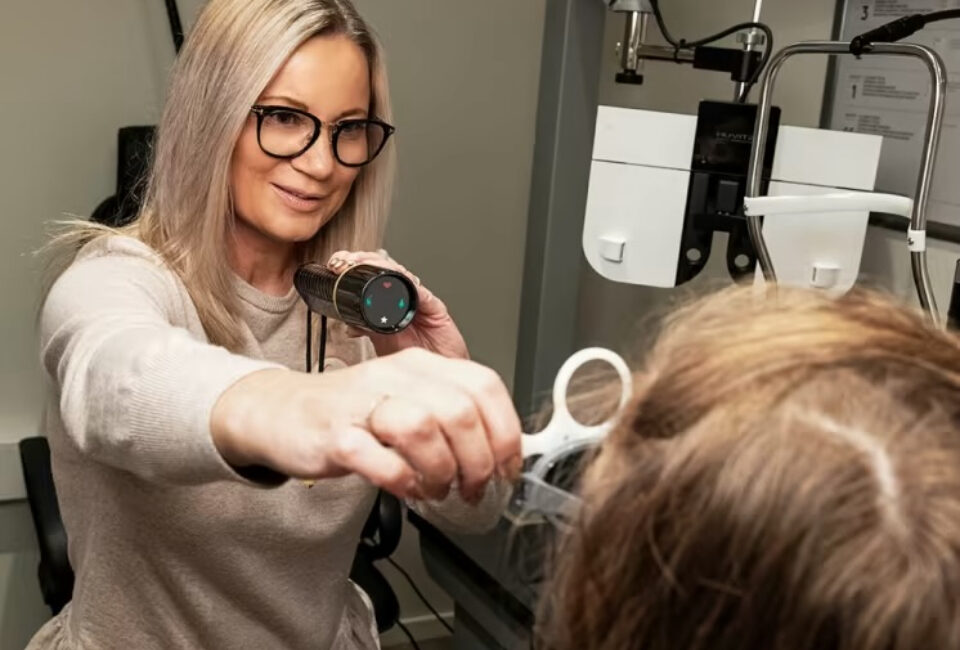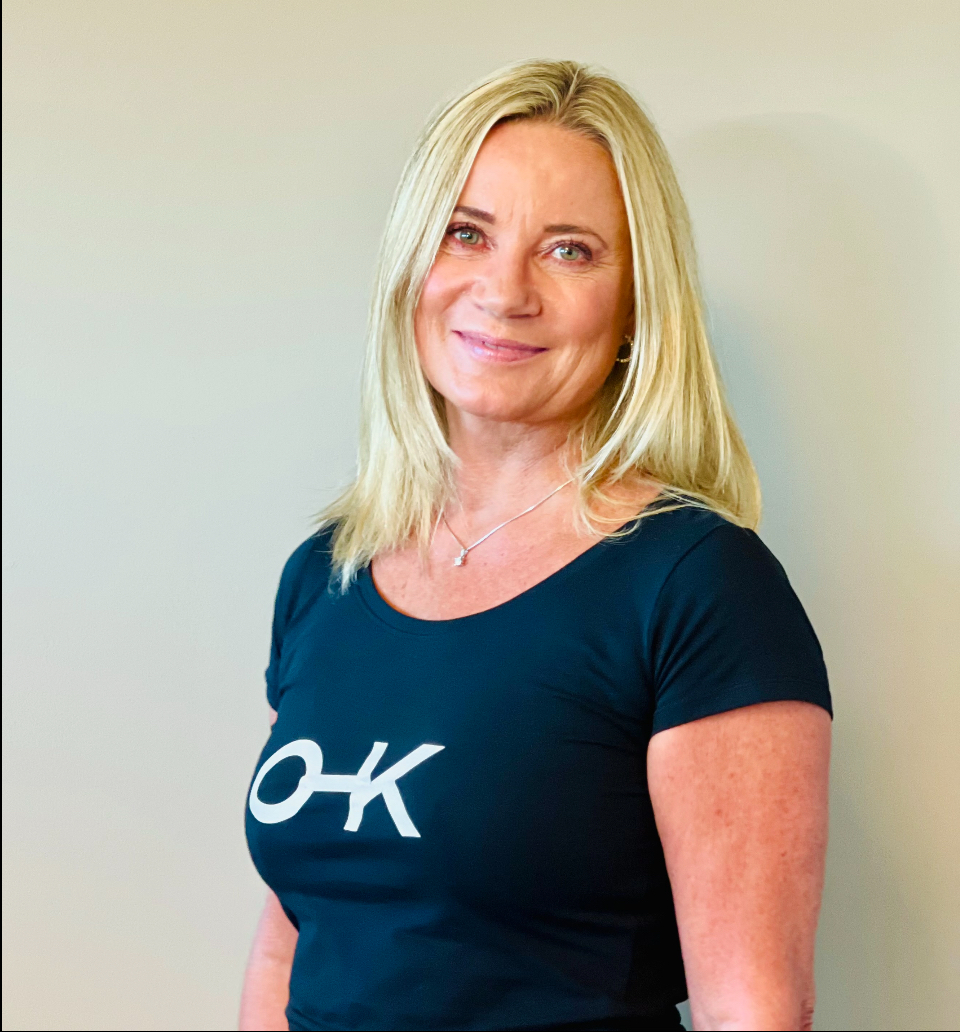No products in the cart.

No products in the cart.

Are you struggling to get your headaches under control? Perhaps your vision contributes to tension and a lower threshold for migraines or headaches? In this article, we interview neuro-optometrist Elin Hansson who gives you insight into how vision problems, especially co-vision disorders, can be a hidden cause of headaches. She explains how a thorough eye examination can reveal the problem and how vision therapy can be an effective treatment.
The interview with Elin Hansson is part of our series of articles aimed at finding good preventive solutions for you with headaches.
The first article dealt with“Preventing headaches through exercise“, with an emphasis on fitness, strength and relaxation for headaches.
Some of the headaches we focused on were migraines, tension headaches, cervicogenic headaches and post-traumatic headaches.
In this article, we’ll also look at how we can prevent headaches – through vision training.
Those of us who work with headaches and concussions at Limiceph and Helsegruppen NEMUS have collaborated with Elin Hansson for several years on, among other things, assessment and vision training of patients with visual challenges related to headaches, dizziness and neck pain. She is considered one of the most experienced and skilled optometrists in Norway, with a special interest, experience and expertise in vision problems after concussion.
Follow us on our channels Facebook and Instagram or click here to read more about preventive measures against headaches.
Elin is interviewed by Martin Herneblad-Due. Ønsker du mer bakgrunnsinformasjon om innholdet i artikkelen, ta kontakt med oss på post@hodepine-info.no.
Elin Hansson is an experienced neuro-optometrist specializing in children and vision, sports and vision, as well as concussion/mild traumatic brain injury (mTBI) treatment and vision therapy. After training as an optometrist in Norway, she traveled to the United States to complete a Master of Science (M.Sc.) and Doctor of Optometry (O.D.) at Pacific University in Oregon. She has furthered her education in functional optometry, focusing on children and vision, vision therapy, sports and vision, autism and traumatic brain injury.
We’ve had the pleasure of having a chat with Elin.
In this interview, she shares insights into how vision problems can affect headaches, and what patients and healthcare professionals should be aware of.
An optometrist is an optician with broad expertise covering visual defects, optical correction, eye health and, not least, vision-related functions such as co-vision and the eye motor system.
Optometrists assess vision holistically, focusing on how the eyes work together and how visual impressions are processed in the brain.
This includes diagnosing and treating functional vision problems such as amblyopia, reduced visual abilities such as
convergence insufficiency and other co-vision disorders.
Treatment may include glasses, contact lenses, vision therapy or referral for further intervention.
An orthoptist, on the other hand, specializes in the eye motor system, particularly in relation to the eye muscles and coordination between the eyes.
They work with conditions such as strabismus, amblyopia, convergence insufficiency and other eye motor disorders such as double vision.
The focus is often on muscular imbalances, and treatments may include eye motor exercises, patch therapy, or preparation for surgery.
The difference lies in the approach: Optometrists have a broader focus on visual function and eye-brain interaction, while orthoptists specialize more in the motor aspects and muscular treatment.
Both professional groups work with vision problems, but from slightly different angles.

I often see tension headaches in patients with vision problems. This type of headache occurs as a result of visual strain, for example in the case of co-vision problems or undetected refractive errors. The headache feels like a tight band around the head and often gets worse throughout the day after prolonged visual activity.
Many people with vision problems also suffer from headaches and pain behind the eyes, which may be logical considering the location, near the eyes.
Migraines is also a very common presentation for customers who want to have their vision examined, both those struggling with visual disturbances and visual aura, and those with migraine without aura. The location of the headache itself does not have to be in the forehead, but often they will experience more frequent discomfort and pain on the same side where the visual challenges are greatest. In migraine patients, vision and co-vision problems will lower the threshold for triggering a migraine, and a visual examination can be crucial in finding measures that can provide more control over the migraine.
I also see many people with post-traumatic headaches. Part of my continuing education involves vision training after concussion. Vision and co-vision problems are a common challenge for those who take longer than expected to recover from mild head trauma. New vision challenges can arise, and previously hidden vision challenges can flare up. In addition to headaches, it often leads to dizziness, nausea and neck pain
Co-vision problems can lead to increased visual strain, misalignment of the eyes and double vision, which in turn can trigger headaches. The brain has to work hard to adjust and interpret visual impressions, creating muscle tension in and around the eyes. This is often the cause of headaches after activities such as reading or screen use.
Patients should be aware of headaches that worsen at close to work or during the day, subside on weekends and holidays, and are accompanied by visual symptoms such as double vision, blurred vision or eye fatigue. Headaches after prolonged screen use may also indicate the need for a visual examination.
Yes, especially those who have had underlying co-vision problems that they have previously compensated for, but are now experiencing headaches due to increased strain. When these patients are exposed to increased stress, fatigue or prolonged visual work, their ability to compensate for vision problems can be impaired. This also applies to patients who have had concussion, or elderly people who experience age-related changes in vision.

The examination starts with a thorough conversation about symptoms and headache history.
This is followed by tests such as the cover test, eye motor function, convergence point and depth perception to uncover vision-related causes of headaches.
A thorough visual examination follows to find the right treatment.
In my practice, I also emphasize assessing how the patient copes with stress, as well as how locked the visual system is.
We often start with eye motor exercises that focus on improving the movement of the eyes independently of the rest of the body.
This requires a lot of attention and the right technique.
Furthermore, we train the eyes on the transition between distance and near, making sure that each eye works optimally before we train the co-vision.
The patient must wear properly fitted glasses, attend regular vision therapy sessions and perform daily exercises at home.
Regular follow-up is important to adjust the treatment plan as needed and ensure progress.

Healthcare professionals should consider a thorough eye examination for patients with persistent headaches or dizziness, especially if other medical causes have been ruled out.
It is important to perform specific tests to identify vision-related causes, and to refer patients who experience symptoms that worsen with close work or in certain visual situations.
I work closely with different health professions through interdisciplinary discussions, referrals and follow-up, as well as sharing reports and findings.
This ensures a holistic approach to the patient’s health, taking into account both vision-related and other health challenges.
In general, anyone experiencing headaches should have a thorough eye examination, especially if other medical tests have not found an underlying cause. However, there are some specific symptoms and signs that may indicate that the headache is related to vision:
By paying attention to these symptoms, you can get an early indication that your headache may be related to vision problems, and thus get the necessary help through a thorough eye examination.
Elin works as a neuro-optometrist for Optiker Krogh in Ski.

Keep up to date with the latest advice and treatments for headaches.
No content on this website should ever be used as a substitute for direct medical advice from your doctor or other qualified healthcare professional.
2024 Limiceph AS.
All rights reserved – Privacy policy
Photo: Øistein Holm Haagensen.
Web: Flyt Design